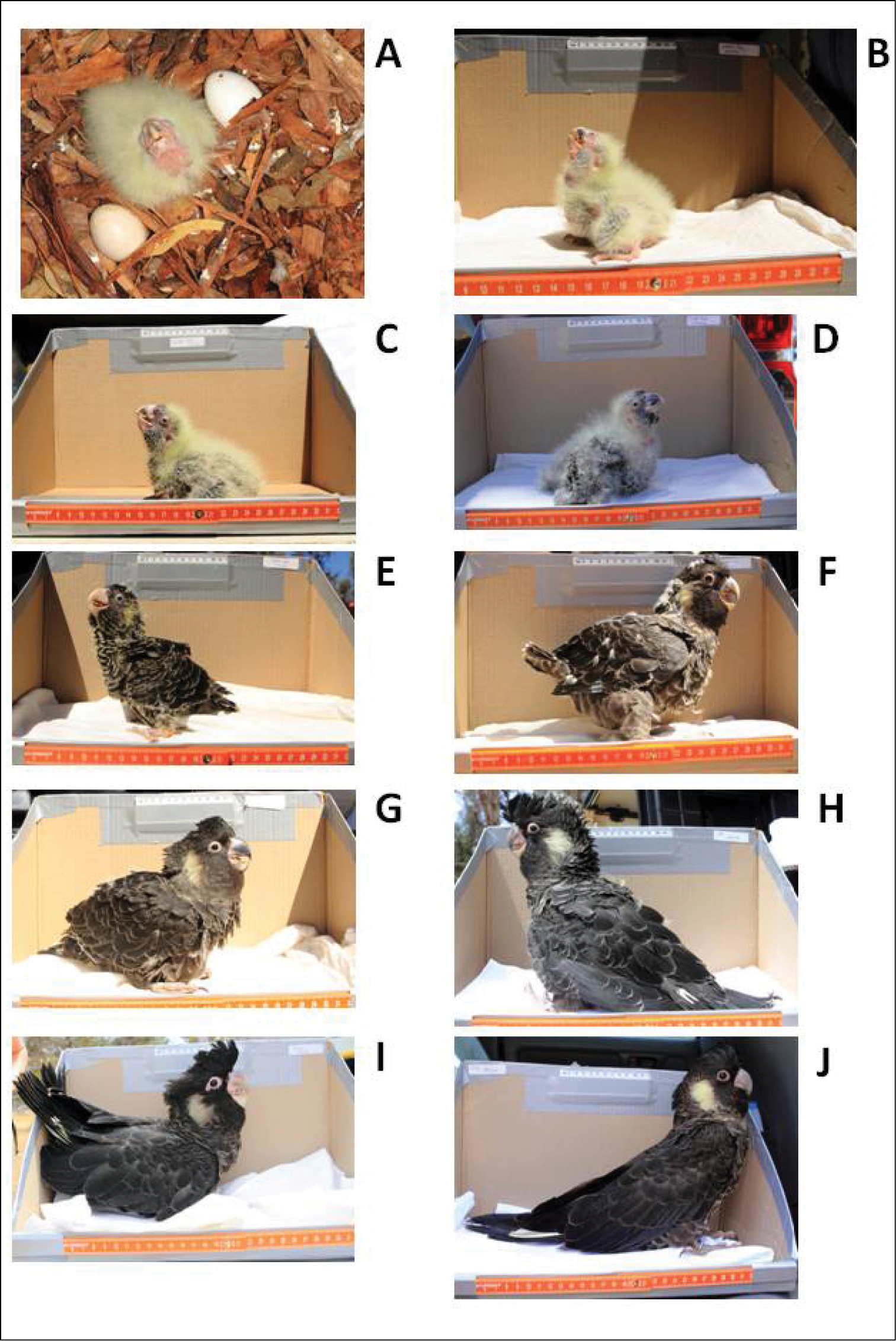
|
||
|
A Week 1 (days 1–7, with day 1 being hatching day): On hatching, Carnaby’s cockatoo nestlings are covered in pale yellow down. They are blind, can sit unaided and have a prominent egg tooth. Note the size of the nestling in relation to the width of the hatched egg which is about 34.5 mm (Saunders and Smith 1981) B Week 2: The nestling’s eyes remain closed, it is still covered with pale yellow down with small developing dark pin feathers, the egg tooth is still present and, if touched the nestling will beg immediately. The scale in the foreground is numbered in cm C Week 3: The nestling’s eyes begin to open, pin feathers burst through the skin on all feather tracts, giving the nestling a greyish appearance because of the feather sheaths under the down. The egg tooth starts to disappear D Week 4: Eyes are completely open, grey stripes become more prominent on the upper bill, down feathers are lost progressively as black feathers burst from their sheaths. The tail feathers begin to emerge and the cheek patch begins to appear E Week 5: The cheek patch is now clearly visible and sexing based on colour and shape of the cheek patch is possible from this age (Saunders 1979b), most down feathers are gone and black feathers with scalloping are prominent. The remnant of the egg tooth is no longer visible F Week 6: Tail feathers are a 2–3 cm long, down feathers continue to disappear, with body feathers almost full size and primary feathers extend almost to the tail. The small size of the cheek patch with darker suffusion and the non-circular shape indicates the nestling pictured is a male G Week 7: Very few down feathers, white tail band starts to emerge, bill end sharpens and crest becomes more prominent. The dusky shading and non-circular shape of the cheek patch indicate the nestling illustrated is a male H Week 8: White bands in tail feathers are 3–4 cm long, body feathers have a black sheen and are the same size as those of an adult, primary feathers are longer than the tail and some down feathers may be still be present. The size, clarity and more rounded shape of the cheek patch indicate the nestling illustrated is a female I Week 9: White bands in tail are 5–6 cm long, down feathers no longer present, nestling now resembles a small adult. It may be aggressive when handled or when an observer checks its nest hollow. The dirty colour of the cheek patch indicates the nestling illustrated is a male J Week 10: The size of the white bands in the tail feathers and the length of the primary feathers are close to those of adults. The nestling resembles an adult. It is capable of flight and if disturbed may fledge. The clarity of the cheek patch indicates the nestling illustrated is a female. |